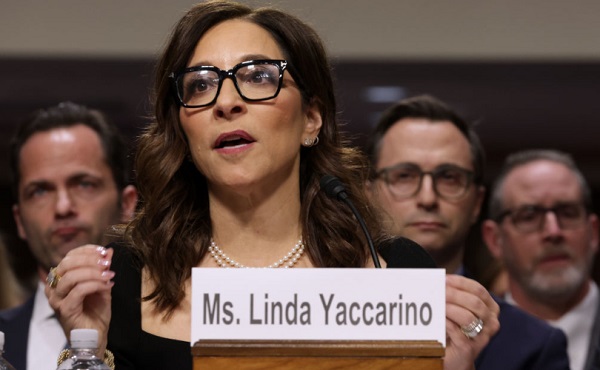Education
Rebels earn Jim Donlevy Memorial Trophy as WHL Scholastic Team of the Year

News release from the Red Deer Rebels
It’s a great accomplishment for the Red Deer Rebels as the club is the Western Hockey League’s Scholastic Team of the Year.
The Rebels were announced Tuesday as the 2023-24 winner of the Jim Donlevy Memorial Trophy, presented annually to the WHL member Club that achieves the highest overall academic performance during the regular season.
“On behalf of the Red Deer Rebels, I’d like to thank the league for being selected for the Jim Donlevy Memorial Trophy. We take great pride in working with our players to be the best they can be,” says Teresa Jaeger, Rebels Education Advisor.
“I’d like to thank the players for all the hard work and commitment they put into getting their assignments done and getting the best grades. I’d also like to thank the teachers at Notre Dame and Athabasca University for helping the team.”
The Rebels had nine players attending École Secondaire Notre Dame High School in Red Deer during the season, while other players did online programming through Athabasca University.
The combined average for all Rebels high school players this season is 88%.
The Rebels have taken a collaborative approach to working with players to achieve academic success. Jaeger, Rebels Hockey Operations Manager Arie Postmus, and Notre Dame Vice Principal Curtis Lansing, work hand in hand to continually monitor how players are progressing. Daily liaisons with players provide the structure and support necessary to getting the most from the time available to learning.
Students not enrolled at Notre Dame are monitored in their progress by the Education Advisor having contact with their teachers and home school administrators.
“It is fantastic to see our players rewarded for the effort they put into their schoolwork. The dedication they showed to balance on ice performance and off ice performance in the classroom is very rewarding” said Postmus.
“I am very happy for them all. Teresa also deserves a ton of credit for the countless hours she gives to head our education program and support these players to ensure they graduate with stellar marks.”
The WHL Scholastic Team of the Year Award is named in honour of Jim Donlevy, long-time WHL Director, Education Services, who passed away in August 2019 following a courageous battle with cancer. This marks the fourth presentation of the Jim Donlevy Memorial Trophy to a WHL Club since its dedication.
Donlevy was instrumental in the creation and continued success of the WHL Scholarship program – the largest privately-funded amateur sports scholarship program in Canada, and one of the most comprehensive education programs for hockey in the world today. Since the establishment of the WHL Scholarship in 1993-94, nearly 8,000 scholarships have been accessed, totaling an investment of over $35 million by WHL Clubs.
“This award win is a great achievement that celebrates all the hard work by our players and staff. The Rebels place great importance in ensuring our players are focused on their academics during the season, and we take pride in their success.” says Rebels Owner, President, and General Manager Brent Sutter.
“Congratulations to the players, Teresa and Arie for this well-deserved honour, and thank you to our partner schools for all your help.”
The Rebels are just the third Alberta-based team, and first since the Calgary Hitmen in 2013-14, to win the Jim Donlevy Memorial Trophy/WHL Scholastic Team of the Year Award since 2000.
News release from the Western Hockey League
The Western Hockey League announced today the Red Deer Rebels have been awarded the Jim Donlevy Memorial Trophy as the WHL Scholastic Team of the Year for the 2023-24 season.
The WHL Scholastic Team of the Year Award was renamed in honour of Jim Donlevy, longtime WHL Director, Education Services, who passed away in August 2019 following a courageous battle with cancer. This marks the fourth occasion on which the Jim Donlevy Memorial Trophy will be presented to a WHL Club since its dedication.
“On behalf of the Red Deer Rebels, I’d like to thank the league in being selected for the Jim Donlevy Scholastic Team,” said Teresa Jaeger, Education Advisor for the Red Deer Rebels. “We take great pride in education here and working with our players to be the best that they can be.
“I’d like to thank the players for their hard work and all their commitment they put into getting the best grades and getting their assignments done. I’d also like to thank the teachers at Notre Dame and Athabasca University for helping the team.”
With nine players attending high school, the Rebels combined high-school average for the 2023-24 academic season was 88 per cent. A hardworking group, the Rebels’ high-school aged players put pride in achieving in the classroom, going the extra mile in order to have success.
“On behalf of my family, I am honoured to present the winner of the Jim Donlevy Memorial Trophy, presented to the WHL Scholastic Team of the Year,” said Lisa Stollery, daughter of Jim Donlevy. “A huge congratulations to the Red Deer Rebels – their extremely hardworking student-athletes, their teachers who help these young men to excel in their academics, their Education Advisor Teresa Jaeger, the Rebels coaches and management team, and the families that support and love them. They are extremely hardworking students.”
As an organization, the Rebels have taken a collaborative approach to working with players to ensure academic success. Jaeger works closely with Hockey Operations staff and leadership from Red Deer’s Notre Dame High School to continually monitor how players are progressing. By having daily sessions, players are provided with the structure and support required to get the most from the learning time available to them.
While on the road, Hockey Operations staff provide leadership and support to keep players on academic track during road trips. Times are designated for players to focus on coursework and they have the opportunity to connect with teachers and Jaeger through Zoom, text, email and Google Meets.
The Rebels insistence on a regular and productive academic routine, combined with support and supervision, has created an environment that fosters academic success.
This is the first occasion in which the Red Deer Rebels have been named the WHL Scholastic Team of the Year.
Winners of the Jim Donlevy Memorial Trophy (since 2004)
2023-24: Red Deer Rebels
2022-23: Portland Winterhawks
2021-22: Brandon Wheat Kings
2020-21: Not presented due to COVID-19
2019-20: Kamloops Blazers
2018-19: Portland Winterhawks
2017-18: Saskatoon Blades
2016-17: Victoria Royals
2015-16: Spokane Chiefs
2014-15: Kamloops Blazers
2013-14: Calgary Hitmen
2012-13: Portland Winterhawks
2011-12: Edmonton Oil Kings
2010-11: Swift Current Broncos
2009-10: Tri-City Americans
2008-09: Prince Albert Raiders
2007-08: Chilliwack Bruins
2006-07: Kamloops Blazers
2005-06: Kootenay ICE
2004-05: Vancouver Giants
2003-04: Portland Winter Hawks
Alberta
Alberta poll shows strong resistance to pornographic material in school libraries

From LifeSiteNews
A government survey revealed strong public support, particularly among parents, for restricting or banning sexually explicit books.
Albertans are largely opposed to their children viewing pornography in school libraries, according to government polling.
In a June 20 press release, the Government of Alberta announced that their public engagement survey, launched after the discovery of sexually explicit books in school libraries, found that Albertans strongly support removing or limiting such content.
“Parents, educators and Albertans in general want action to ensure children don’t have access to age-inappropriate materials in school libraries,” Demetrios Nicolaides, Minister of Education and Childcare, said.
“We will use this valuable input to guide the creation of a province-wide standard to ensure the policy reflects the priorities and values of Albertans,” he continued.
READ: Support for traditional family values surges in Alberta
The survey, conducted between May 28 to June 6, received nearly 80,000 responses, revealing a widespread interest in the issue.
While 61 percent of respondents said that they had never previously been concerned about children viewing sexually explicit content in libraries, most were opposed to young children viewing it. 34 percent said children should never be able to access sexually explicit content in school libraries, while 23 percent believed it should be restricted to those aged 15 and up.
Similarly, 44 percent of parents of school-aged children were supportive of government regulations to control content in school libraries. Additionally, 62 percent of respondents either agreed or strongly agreed that “parents and guardians should play a role in reporting or challenging the availability of materials with sexually explicit content in school libraries.”
READ: Alberta Conservatives seeking to ban sexually graphic books from school libraries
The polling results come after the Conservative Alberta government under Premier Danielle Smith announced that they are going ahead with plans to eventually ban books with sexually explicit as well as pornographic material, many of which contain LGBT and even pedophilic content, from all school libraries, on May 27.
At the time, Nicolaides revealed that it was “extremely concerning” to discover that sexually explicit books were available in school libraries.
The books in question, found at multiple school locations, are Gender Queer, a graphic novel by Maia Kobabe; Flamer, a graphic novel by Mike Curato; Blankets, a graphic novel by Craig Thompson; and Fun Home, a graphic novel by Alison Bechdel.
David Clinton
Why Are Ontario’s Public Schools So Violent?


 David Clinton
David Clinton
Ontario’s Auditor General just released a performance audit on the Toronto District School Board. I’m sure it’ll surprise exactly no one that “financial and capital resources are not consistently allocated in the most cost-effective or efficient way” or that “The effective management of operations was not always being measured and assessed for internal decision-making”.
And there was plenty of institutional chaos:
“Between 2017/18 and 2022/23…about 38% of TDSB schools did not report conducting the minimum number of fire drills required by the Ontario Fire Code annually, and about 31% of TDSB schools did not report conducting the minimum number of lockdown drills required by TDSB policy annually. The TDSB does not have an effective process to ensure the required number of drills are performed by each school, each year, or that they are performed in accordance with TDSB policy when performed.”
What else would you expect from a massive government bureaucracy that employs 40,000 people, spends $3.6 billion annually and – based on many of the highlighted items on their website – is laser-focused on pretty much anything besides education?
What you might not have seen coming was that around half of the report centered on in-school violence. To be sure, we’re told that there were only 407 violent events reported to the board during the 2022/2023 school year – which is a rate of around 17 events for every 10,000 students. 17:10,000 doesn’t exactly sound like an environment that’s spiraling out of control.
There was a caveat:
“Due to input errors by principals, the TDSB underreported the number of violent incidents that occurred between 2017/18 to 2021/22 to the Ministry by about 9%.”
Ok. But we’re still nowhere near Mad Max levels of violence. So what’s attracting so much of the auditor’s attention? Perhaps it’s got something to do with a couple of recent surveys whose results don’t quite match the board’s own records. Here’s how the audit describes the first of those:
“The 2022/23 TDSB Student and Parent Census was responded to by over 138,000 students, parents, guardians and caregivers. It showed that 23% of students in Grades 4 to 12 that responded to the survey said they were physically bullied (e.g., grabbed, shoved, punched, kicked, tripped, spat at), and about 71% stated they were verbally bullied (e.g., sworn at, threatened, insulted, teased, put down, called names, made fun of). Further, about 14% of student respondents indicated they had been cyberbullied. TDSB’s central tracking of all bullying incidents is much lower than this, suggesting that they are not centrally capturing a large number of bullying incidents that are occurring.”
“23% of students in Grades 4 to 12 that responded to the survey said they were physically bullied”. That’s not a great fit with that 17:10,000 ratio, even if you add the 9 percent of underreported incidents. And bear in mind that these students and their families were willing to discuss their experiences in a survey run by the school board itself, so it’s not like they’re hard to find.
But that’s not the worst of it. The Elementary Teachers’ Federation of Ontario (ETFO) ran their own survey in 2023. They wanted to hear about their members’ experiences with workplace violence. Here, quoting from the audit report, is what TDSB respondents told them:
- 42% had experienced physical force against themselves in 2022/23;
- 18% had experienced more than 10 of these physical force incidents in 2022/23;
- 81% indicated the number of violent incidents increased since they started working;
- about 77% responded that violence was a growing problem at their school;
- about 29% indicated they had suffered a physical injury;
- 57% had suffered a psychological injury/illness (such as mental stress, psychological or emotional harm) as a result of workplace violence against them; and
- about 85% indicated that violence at their school made teaching and working with students more difficult.
29 percent of teachers suffered a physical injury due to workplace violence. That’s elementary school teachers we’re talking about.
For perspective, even accounting for the 9 percent underreporting, the TDSB was aware of events impacting less than a quarter of a percentage point of their students (and apparently didn’t report any violence against teachers). But by their own accounts, 23 percent of all students and 42 percent of elementary teachers have suffered attacks. Are board officials willfully ignoring this stuff?
And if only there was some way to address violence and other criminal activities on school property. Perhaps – and I’m just spitballing here – there could even be people working in schools whose job it would be to (what’s the word I’m looking for?) police crime.
On a completely unrelated note, back in November, 2017, the Toronto District School Board voted 18-3 to permanently end their School Resource Officer (SRO) program. Since then, police officers have been unwelcome on board property.
To be sure, the TDSB has “accepted” all 18 of the report’s recommendations. But talk is cheap. Who’s to say that commitment won’t play out the same way we’ve seen with their fire drill compliance.
Can you spell “class action lawsuit”?
-

 Also Interesting1 day ago
Also Interesting1 day ago9 Things You Should Know About PK/PD in Drug Research
-

 Business2 days ago
Business2 days ago‘Experts’ Warned Free Markets Would Ruin Argentina — Looks Like They Were Dead Wrong
-

 Business1 day ago
Business1 day agoCannabis Legalization Is Starting to Look Like a Really Dumb Idea
-

 Business2 days ago
Business2 days agoWEF-linked Linda Yaccarino to step down as CEO of X
-

 Business1 day ago
Business1 day agoCarney government should recognize that private sector drives Canada’s economy
-

 Bruce Dowbiggin1 day ago
Bruce Dowbiggin1 day agoThe Covid 19 Disaster: When Do We Get The Apologies?
-

 Media1 day ago
Media1 day agoCBC journalist quits, accuses outlet of anti-Conservative bias and censorship
-

 Automotive2 days ago
Automotive2 days agoAmerica’s EV Industry Must Now Compete On A Level Playing Field





